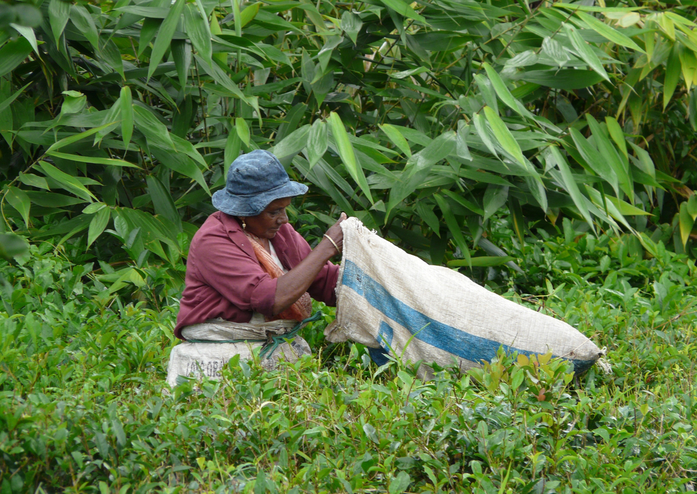|
The Republic of Mauritius is an island nation situated in the Indian Ocean, approximately 2,000 kilometres off the southeastern coast of East Africa, east of Madagascar. Its territory comprises the main island, Rodrigues, Agaléga, and St. Brandon. Until I travelled to Mauritius, I did know that it wasn't home to any indigenous population but a huge colony of now extinct Dodo birds and tortoises. (Apparently, they were a slow moving bird that could be caught and eaten easily). Its journey began with Arab sailors who discovered it around 975 CE, followed by Dutch colonists named it after Prince Maurice of Nassau in the 16th century. Old world superpowers of the time encouraged colonisation and migration and have shaped the diverse population of Mauritius today. French, English and Dutch brought labourers from Indian and African labourers. Indo-Mauritians form the majority today, followed by significant Creole, Sino-Mauritian, and Franco-Mauritian communities. From the captivating sounds of Sega music, a blend of African and European influences, to the colourful Hindu temples and French colonial architecture, the island showcases a beautiful fusion of traditions. Mauritian Hospitality Etiquette Mauritians are renowned for their warmth and hospitality. Their welcoming spirit and the island's natural beauty make it a top tourist destination. Due to varying social norms influenced by cultural and religious backgrounds, each community defines respectful behaviour according to its standards. Hosts typically offer food and drink like biscuits and tea, and it's considered polite for guests to try everything served, making the host feel honoured for their labours. While guests aren't expected to bring gifts, a small item from your country of origin, fruit or cake will be pleasing. Sunday afternoons often see people visiting each other, and it’s a time to relax on the beach or next to the water with a BBQ with freshly caught fish, vegetable dishes and a bottle of local beer or rum. When eating foods, whether Indian, Creole, or Asian, a fork, spoon, and knife are used, as well as hands and chopsticks. Food Found in Mauritius I found that food is Indian based without the spice or heat you would find in India or Sri Lanka. Street food sellers will offer a few varieties of fast food, from noodles to rolled roti veg snacks to deep friend pakoras and samosas. On the island of Rodrigues, you will find Creole-based foods from fresh seafood, crab soup, pork chops to rice, maize, cornmeal to fresh green papaya salad with a side of rum that has been steeped with local ingredients such as chilli, oranges, ginger, cinnamon, cumquat and homegrown vanilla. You will find that there are many religions on the island. Therefore, many households will have different religo-cultural traditions, and food will be served accordingly. The Hindu population will avoid eating beef; therefore, gifts should not be leather; Muslims will avoid eating pork and gifting anything created in pigskin or offer alcohol, and Catholics abstain from eating fish on a Friday. I thoroughly enjoyed holidaying in Mauritius. I was awed by its beautiful green forests, animal life, cultural diversity and different food offered. People are relaxed and happy to talk with you and its vast clean beaches and temperate climate. One of the points of interest on my holiday to-do list was to visit the famous Bois Cheri Tea Factory. This plantation produces tonnes of Mauritian-grown tea distributed throughout the island and worldwide. There, I learned about the green and black tea process. It was a tremendous insight, and I felt honoured to have known more about a drink that has been drunk worldwide over the centuries and helped me as an etiquette instructor.
There is so much to do in Mauritius, and I hope that you have a wonderful time. Article Published By: Etiquipedia.blogspot.com
0 Comments
On the final day of the second Ashes Test at Lord's, England batsman Jonny Bairstow was given out controversially when Australian wicketkeeper Alex Carey threw down the stumps after Bairstow walked out of his crease. The dismissal led to anger and frustration among England players and fans, and some MCC members confronted Australian players in the Long Room after lunch. What did the Great Britain and Australian leaders say about this incident? A No.10 Downing Street spokesman reported that British Prime Minister Rishi Sunak said, "The prime minister agrees with (England captain) Ben Stokes, who said he simply wouldn't want to win a game in the manner that Australia did". Anthony Albanese tweeted, "I'm proud of our men's and women's cricket teams, who have both won their opening two #Ashes matches against England. Same old Aussies – always winning!" Let's head back a hundred years ago to what started it all…. History of the Ashes "The Ashes" is named after the historic cricket rivalry between England and Australia, dating back to 1882. It originated after England's first-ever Test cricket defeat to Australia on English soil at The Oval (located at Kennington in the borough of Lambeth, in south London) on 29th August 1882. A satirical obituary in The Sporting Times stated that English cricket had died, and "the body will be cremated, and the ashes taken to Australia." Subsequent series between the two nations became known as The Ashes. The teams now compete in five-match Test series alternately in England and Australia. The series is fiercely contested, symbolising cricketing pride, with the victor gaining possession of a small urn believed to contain the "ashes" of a cricket bail. Bodyline
In the 1932-33 Ashes series, England's captain Douglas Jardine adopted a tactic known as "bodyline," involving fast and short-pitched deliveries targeting the body of Australian batsmen. This aggressive strategy, devised to 'out' Australia's most famous batsman, Don Bradman, sparked outrage and strained relations between the teams. The series witnessed intense on-field confrontations and accusations of unsportsmanlike behaviour. Despite England's victory, Bodyline left a lasting impact on cricket, leading to rule changes and a re-evaluation of the spirit of the game. During this time, Sir Alexander Hore-Ruthven, the Governor of South Australia, was highly critical of the controversial tactics employed by the English cricket team. He condemned the bodyline strategy as unsportsmanlike and detrimental to the spirit of the game. Hore-Ruthven and many others felt that the aggressive and potentially dangerous bowling tactic, explicitly targeting the batters, went against the traditional principles of fair play in cricket. The Bodyline series created a diplomatic strain between England and Australia and brought the issue of sportsmanship and the ethics of cricket to the forefront of public discourse. James Henry Thomas, a prominent British politician and member of the British Cabinet during this time, had expressed his concerns and disapproval of the controversial tactic. As the Secretary of State for Dominion Affairs then, Thomas knew of the diplomatic tensions the Bodyline series was causing between England and Australia. In January 1933, during a meeting with the Australian Prime Minister Joseph Lyons, Thomas reportedly apologised for the use of bodyline bowling by the English cricket team. He acknowledged that the tactics employed by the English captain, Douglas Jardine, were causing offence and strain in Anglo-Australian relations. Thomas was famously quoted, “No politics ever introduced into the British Empire caused me so much trouble as this damn bodyline bowling.” Conclusion Looking back over a century ago, it's fascinating to reflect on the origins of The Ashes and how this longstanding cricket rivalry continues to evoke intense emotions and contentious moments on and off the field. The series remains a captivating showcase of skill, passion, and national pride for both England and Australia, exemplifying the enduring appeal of this historic sporting spectacle. Resource: Australian 1984 TV mini-series called ‘Bodyline’ Article Published By: World Protocol Magazine Navigating these trains during rush hour, when the city is at its busiest, can be a heart-pumping exercise if you are new to this! However, with a bit of preparation and insider knowledge, you can turn this chaotic experience into a smooth journey. Mumbai, the bustling financial, call centre and movie-making (Bollywood) capital of India, is known for its vibrant culture, diverse melting-pot population, and iconic local trains. Navigating these trains during rush hour, when the city is at its busiest, can be a heart-pumping exercise if you are new to this! However, with a bit of preparation and insider knowledge, you can turn this chaotic experience into a smooth journey. Here's your comprehensive guide to using Mumbai's local trains during rush hour. 1. Understand the Mumbai Train Network: Before you embark on your rush hour adventure, familiarise yourself with the Mumbai local train network. These trains serve a larger number of stations and have longer routes, connecting different parts of the city and extending into the outskirts and out to cities such as Bangalore, Delhi or Ahmadabad. Tickets are less expensive than the metro, and the cost will change if you choose first, second-class or air-conditioned carriages. The city is served by three main lines – Western, Central, and Harbour. Each line connects different parts of the city and has its own set of stations. See the Wikipedia Map 2. Navigate the Local Metro Train Network: Mumbai has two types of train networks (formally known as Bombay). Mumbai suburban trains operate on traditional rail technology, while metro trains use modern rapid transit technology with features like driverless trains, all carriages are air-conditioned, and bags are searched upon entering the station. Being a relatively newer system, Metro trains may experience less crowding, especially during non-peak hours and are slightly more expensive. Metro lines are designed to connect specific routes to reduce travel time within the city. See Metro Train Map 3. Identify Your Route: Determine your starting and ending stations and the line you need to take. Mumbai locals operate on a slow and fast train system, with slow trains stopping at every station and fast trains skipping some stations. Plan your route accordingly to minimise travel time. I recommend you do this the day before you actually travel. 4. Check the Train Schedule: Mumbai locals run on a tight schedule, and knowing the train timings is crucial. Numerous apps and websites provide real-time information on train schedules, helping you plan your journey more efficiently. The best app to use is m-Indicator, which I have seen numerous locals use (myself included) on their phones to check the progress of their train so they don't miss their stops while scrolling or watching the occasional Bollywood movie. m-Indicator will also direct you to the platform that you need to be on if you are changing trains as many of signs are written in Hindi and can be unclear even to locals. 5. Purchasing a Ticket: Yes, for those that are not local...you might have to line up at the ticket counter! I have found that the one dispensing tickets is very helpful and quick. Here are some tips to get you to and back from your desired destination. Have the station name on your mobile ready to show if they cannot understand the name of the station you want to get to, also, have ready cash to pay for the ticket. Locals will become anxious if you start to dig around your bag holding up the line and may push in. You will also need to indicate whether you will be going one way or want a return ticket, and do you want to be in first class or second carriage?
6. Arrive Early: Rush hour in Mumbai is no joke, and trains can get incredibly crowded. Arrive at the station well in advance to secure a good spot in the line and increase your chances of finding a seat on the train. Mumbai locals have a designated ladies' compartment. If you're a woman or travelling with female companions, take advantage of this facility for a more comfortable journey. There will be signs along the breadth of the station to indicate where the carriage will stop for you to alight. 7. Mind the Gap: Be prepared for the mad rush when the train arrives. Westerners are used to standing clear of the doors and letting passengers alight before boarding. In Mumbai, it happens very differently; you will be pushed to go inside as the train. Please make sure that you take a step up onto the train; otherwise, like me, you can get your foot caught under, only to fall on the person in front of you. The train only waits a minute for passengers to alight. Keep valuables close to you, such as placing your bag in front of your body, so you can keep a one on it. Stay alert for your stop. Mumbai locals have a quick turnaround time at each station. Keep a close ear on announcements or your live app so you're ready to disembark. Get prepared early before you arrive at your stop, pushing your way near the door, so you get off before the train starts to leave for the next station. 8. Embrace the Chaos Whilst Travelling: When entering the train, if you have got on the train in peak time, there is a chance there will be no seats. The best place to stand, without getting shoved or yelled at, is in the aisle or walkway; if that is blocked with people, then you will have to stand between where people are seated. Comfortably, you will be able to stand three people in seated rows! If you are travelling non-peak, then you will be seated on metal or hard foam chairs; you may see people sitting on the floor or sleeping across seats. You will also get sellers bringing a huge hanging stand of products such as socks, scarves, earrings and essential items that you may not find at your local supermarket or bizarre. I have done my best shopping with these types of sellers. Conclusion Embrace the chaos, strike up a conversation with fellow commuters, and enjoy the unique experience that defines Mumbai's rush hour. While Mumbai's rush hour can be overwhelming, mastering the art of using local trains during this time is a rite of passage for anyone visiting or living in the city. With the right knowledge and a bit of patience, you can transform your commute into an adventure and appreciate the vibrant spirit of Mumbai. Safe travels! Article Published: Etiquipedia.blogspot.com Mastering Etiquette Across Domains: Your Guide to Social, Business, and Dining Etiquette Magazines6/12/2023 First, starting out by learning and understanding etiquette, I mistakenly gave my Asian coach a beautiful glass crystal clock gift. In horror, after reading her extremely kind email of thanks, she explained the cultural differences between what the Chinese thought of clocks and the superstition behind them. What a cultural etiquette faux pas to make! Cultural differences significantly impact communication and etiquette by values and expectations in social interactions. These variations can be subtle or more pronounced, influencing various aspects of communication, including verbal and nonverbal language, directness, and politeness norms. So, you are probably now asking what cultural etiquette or protocol is. or even this....what are the rules of cultural etiquette? and how do you follow cultural protocol? Here are several pointers that can help when speaking to international counterparts at work or travelling on holiday: Communication Styles: Different cultures may have varying preferences for communication styles, such as directness versus indirectness. Some cultures value explicit and straightforward communication, while others prioritise implicit or indirect expression.
Non-Verbal Cues: In various cultures, body language, gestures, and facial expressions can convey different meanings. What is considered acceptable or respectful in one culture may be interpreted differently in another, leading to potential misunderstandings.
Hierarchy and Authority: The perception of hierarchy and authority varies across cultures. Some adhere strictly to hierarchical structures, while others may adopt a more egalitarian approach. This influences how individuals express themselves and respond to authority figures.
Greeting Customs: The way people greet each other can vary widely. Some cultures embrace physical contact, like hugs or kisses, while others prefer a more reserved approach, such as a bow or a handshake. Understanding these differences is crucial in avoiding unintentional disrespect.
Gift-Giving Customs: The etiquette surrounding gift-giving can differ significantly. In some cultures, gifts are opened immediately, while in others, it may be considered polite to open them later privately. Additionally, the types of gifts that are appropriate can vary.
Dress Code: Cultural norms regarding dress code can impact how individuals present themselves in various settings. Understanding the expectations around attire is crucial for demonstrating respect and appropriateness.
Awareness of these cultural differences is essential for effective cross-cultural communication and for navigating social situations with sensitivity and respect. The key to bridging the cultural gaps is to pay attention to nonverbal cues and adapt communication styles accordingly. Practising patience and having an open mind. Ask questions and seek clarification when uncertain to avoid misinterpretations, and last but not least, embrace and celebrate cultural diversity. Our world is an amazing place! |
AuthorElizabeth Soos Archives
March 2025
Categories |
|
CONTACT US Submit Your Enquiry |









 RSS Feed
RSS Feed

